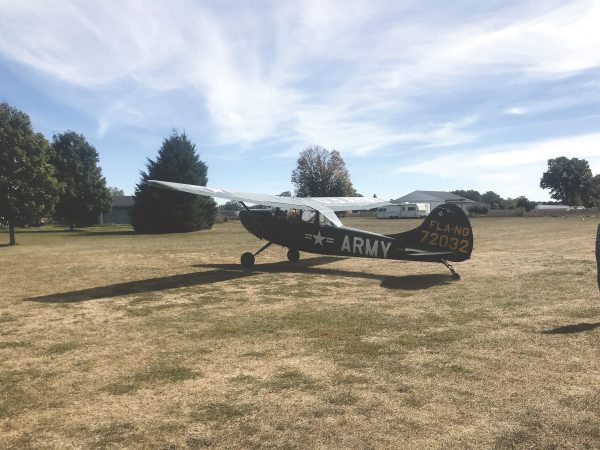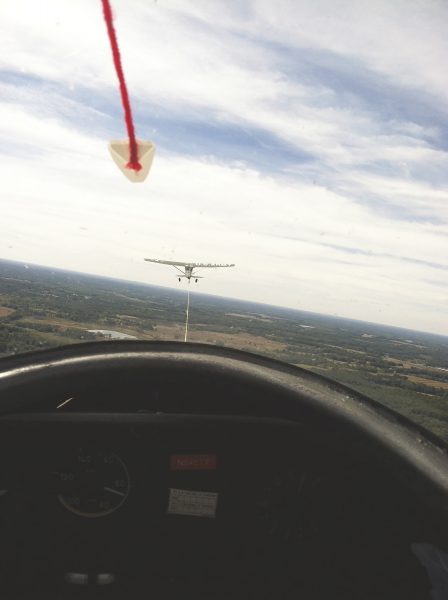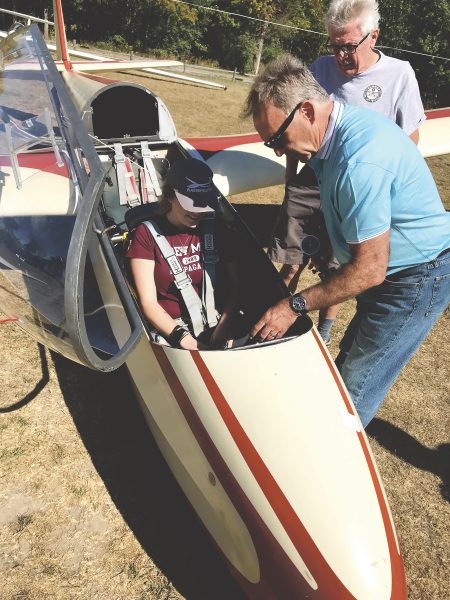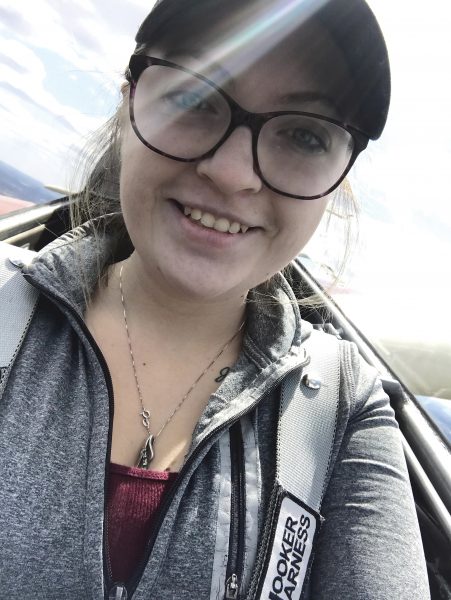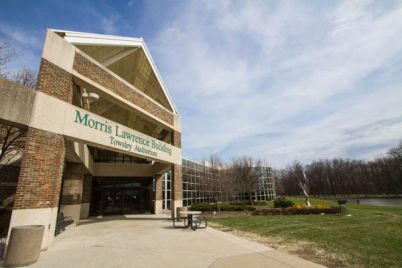- A WWII vintage plane.
- A WWII vintage plane tows a glider 2,500 feet above the ground.
- The author takes a selfie in the cockpit of her training glider.
by Camille Lilley
Staff Writer
I became interested in gliders when I was a little younger, maybe around 10 or so. My dad, Chris Parkyn, builds model remote control planes as a hobby and flies A350 commercial planes most days of the week.
Last summer, he took my boyfriend and me out to Sandhill Soaring Club to take a discovery ride in their N545TT training glider. That ship is where it all started.
Gliding is an experience I recommend anyone go through at least once in their life.
You see the world from a whole different dimension. Instead of three-dimensions, from up there, 3,920 feet above sea level, you are literally one with the birds.
My dad flies for Delta Airlines, and has been for the past 30-odd years. He taught us how to appreciate the airways and sometimes helps teach ground school, or school for student pilots.
Every Monday night, I’m among the students at ground school at the Ann Arbor Airport, taught by John Harte.
Harte is a local contractor and pursues his love for gliding whenever he gets the chance. He is Sandhill’s chief instructor. This winter he flew to Namibia, Africa to fly his glider in a different setting. Harte not only teaches ground school, he instructs up in the air as well.
To get the glider in the air, a single-engine plane tows you up to 3,000 feet above ground level. Once you achieve the proper height, the glider pilot releases the latch with the tow, and you are on your own. Student pilots are always accompanied by an instructor pilot.
There are two seats in the cockpit and lined up so the instructor can see what the student is doing. The controls are linked together. If your foot pedal moves, so does the instructor’s and so on. The instructor can control who has the flight controls just in case the student messes up. While in control, the instructor can reverse the controls and correct a mistake if need be.
To get a lift so the ship can stay aloft, pilots use upward currents of warm air, more known as thermals. Those currents decides the length of the instruction flight student pilots fly. Usually these flights last 30 minutes. Make sure you bring a jacket because there is no central heat in the aircraft.
Student pilots have a lot of work before their solo flight. Ground school lasts 13 weeks and includes a total between 30 to 40 flights with an instructor. Students must pass the Federal Aviation Association written and oral exams, too. In total, 10 to 12 hours of flight time and a couple hours of homework a week. No big deal right?
Right, but becoming a pilot is no joke. Flying gliders, you understand how to operate effectively in an emergency situation, while still appreciating and respecting proper airway traffic regulations, which you learn in ground school.
What if you maneuver wrong or lose a wing due to strong thermals? You cannot be faint of heart when it comes to this hobby.
The club I belong to is all about getting involved with young people like me and a few of my classmates. Sandhill provides scholarships to attract more young people.
The scholarships are around $5,000 and you simply have to be a student pilot as well as a college student or pursuing a college career to receive one.
I did not join because of the scholarships however, once I took a discover flight, I was hooked. There is no way you could get me to come down that day. Joining the club and meeting a lot of professional businessmen or other students like me who are interested in something that really lights a fire in me is always a joy.
There are many people to thank for how far I have come as a student pilot and sharing my joy with other peers that might also be interested is a very interesting place to be.
If you ever get the chance, take a trip out to Richmond Field in Gregory. Test your wings. Prices for rides and club memberships can be found on the Sandhill website https://www.sandhillsoaring.org.

